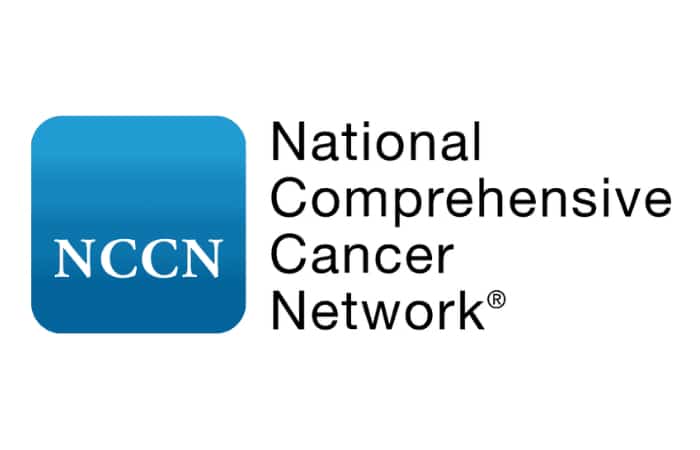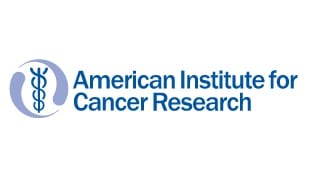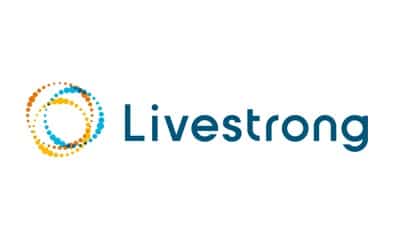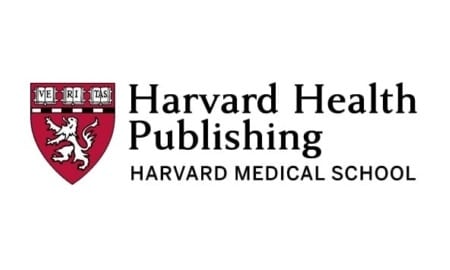Moving More at a glance
Moving More is one of the most effective ways to reduce cancer risks and improve cancer outcomes. You might be surprised to learn that the scientific evidence linking physical activity beneficially to cancer is the strongest of any of the lifestyle therapies, even more so than diet and cancer.
“I have found that Moving More is one of the most powerful and subtle of our 7 Lifestyle Practices,” says Commonweal and CancerChoices co-founder Michael Lerner. “Most people will think Moving More automatically means exercise. Yes, exercise is vital, but Moving More also includes stretching, movement therapies such as qigong, and sensing into the ways your body wants to move.”
“There are also all the movements of everyday life that can be undertaken more consciously. Washing the dishes. Doing laundry. Sweeping the floor. These can even be a form of meditation,” Michael says.
Physical activity has been shown to improve cancer treatment outcomes; reduce cancer risks; promote an internal ecosystem that is less friendly to cancer; and help people manage treatment side effects better.
Below you will find more information about each of these relationships, along with links to some of the most relevant research studies. If you are interested in diving deeper into the research, you can visit our page How can Moving More help you? What the research says ›.
On this page, you can also learn about how to Move More ›, our community members’ experiences with Moving More ›, and other helpful resources › outside of CancerChoices.
If you have been diagnosed with cancer, don’t be afraid to be active. But check with your doctor first, and always listen to your body’s need for rest.
On this page
Moving More and cancer
Improving treatment outcomes
How does Moving More affect cancer outcomes? Science shows that people who keep moving after their diagnoses have better survival rates and quality of life than those who are inactive.1Takemura N, Chan SL, Smith R, Cheung DST, Lin CC. The effects of physical activity on overall survival among advanced cancer patients: a systematic review and meta-analysis. BMC Cancer. 2021 Mar 7;21(1):242. Studies that include people with various cancers have shown that physical activity provides treatment outcome benefits across cancer types.2Morishita S, Hamaue Y, Fukushima T, Tanaka T, Fu JB, Nakano J. Effect of exercise on mortality and recurrence in patients with cancer: a systematic review and meta-analysis. Integrative Cancer Therapies. 2020 Jan-Dec;19:1534735420917462; Li T, Wei S et al. The dose-response effect of physical activity on cancer mortality: findings from 71 prospective cohort studies. British Journal of Sports Medicine. 2016 Mar;50(6):339-45; Cannioto RA, Dighe S et al. Habitual recreational physical activity is associated with significantly improved survival in cancer patients: evidence from the Roswell Park Data Bank and BioRepository. Cancer Causes Control. 2019 Jan;30(1):1-12; Salerno EA, Saint-Maurice PF et al. Ambulatory function and mortality among cancer survivors in the NIH-AARP Diet and Health Study. Cancer Epidemiology, Biomarkers & Prevention. 2021 Apr;30(4):690-698.
Getting active three to four times per week gives you significant survival advantages, but even one to two sessions are beneficial compared to not moving at all.3Cannioto RA, Dighe S et al. Habitual recreational physical activity is associated with significantly improved survival in cancer patients: evidence from the Roswell Park Data Bank and BioRepository. Cancer Causes Control. 2019 Jan;30(1):1-12. During chemotherapy, staying active can improve how you feel and make it easier for you to complete treatments.4Cave J, Paschalis A et al. A systematic review of the safety and efficacy of aerobic exercise during cytotoxic chemotherapy treatment. Supportive Care in Cancer. 2018 Oct;26(10):3337-3351; Courneya KS, Segal RJ et al. Effects of aerobic and resistance exercise in breast cancer patients receiving adjuvant chemotherapy: a multicenter randomized controlled trial. Journal of Clinical Oncology. 2007 Oct 1;25(28):4396-404. Overall, scientific evidence supports that Moving More markedly enhances cancer treatment outcomes.
(We strongly emphasize that Moving More alone will not prevent, cure or control cancer or prevent recurrence. Like every other therapy or approach included on this website, Moving More is one component of an individualized integrative plan rather than a stand-alone therapy.)
Optimizing body terrain
Moving More plays a significant role in creating an internal body environment that is less conducive to cancer development, growth, and spread.5Singh B, Hayes SC et al. Exercise and colorectal cancer: a systematic review and meta-analysis of exercise safety, feasibility and effectiveness. International Journal of Behavioral Nutrition and Physical Activity. 2020 Sep 24;17(1):122; Soares Falcetta F, de Araújo Vianna Träsel H et al. Effects of physical exercise after treatment of early breast cancer: systematic review and meta-analysis. Breast Cancer Research and Treatment. 2018 Aug;170(3):455-476; Wang Y, Jin B et al. The effects of exercise on insulin, glucose, IGF-axis and CRP in cancer survivors: meta-analysis and meta-regression of randomised controlled trials. European Journal of Cancer Care (England). 2020 Jan;29(1):e13186; McDermott LA, Murphy MH, McNeilly AM, Rankin JP, Gracey JH. Biological markers as an outcome measure of exercise in cancer rehabilitation: a systematic review. Journal of Cancer Research and Therapeutics. 2018 Jan-Mar;14(2):267-277; Dieli-Conwright CM, Courneya KS et al. Effects of aerobic and resistance exercise on metabolic syndrome, sarcopenic obesity, and circulating biomarkers in overweight or obese survivors of breast cancer: a randomized controlled trial. Journal of Clinical Oncology. 2018 Mar 20;36(9):875-883; Kim TH, Chang JS et al. Effects of exercise training on circulating levels of Dickkpof-1 and secreted frizzled-related protein-1 in breast cancer survivors: a pilot single-blind randomized controlled trial. PLoS One. 2017 Feb 8;12(2):e0171771; Beserra AHN, Kameda P et al. Can physical exercise modulate cortisol level in subjects with depression? A systematic review and meta-analysis. Trends in Psychiatry and Psychotherapy. 2018 Oct-Dec;40(4):360-368; Ligibel JA, Dillon D et al. Impact of a pre-operative exercise intervention on breast cancer proliferation and gene expression: results from the Pre-Operative Health and Body (PreHAB) study. Clinical Cancer Research. 2019 Sep 1;25(17):5398-5406; Wang Y, Jin B et al. The effects of exercise on insulin, glucose, IGF-axis and CRP in cancer survivors: meta-analysis and meta-regression of randomised controlled trials. European Journal of Cancer Care (England). 2020 Jan;29(1):e13186; de Sousa CV, Sales MM, Rosa TS, Lewis JE, de Andrade RV, Simões HG. The antioxidant effect of exercise: a systematic review and meta-analysis. Sports Medicine. 2017 Feb;47(2):277-293; Aya V, Flórez A, Perez L, Ramírez JD. Association between physical activity and changes in intestinal microbiota composition: a systematic review. PLoS One. 2021 Feb 25;16(2):e0247039; Xu J, Yuan X et al. Association of circulating 25-hydroxyvitamin D levels with colorectal cancer: an updated meta-analysis. Journal of Nutritional Science and Vitaminology (Tokyo). 2018;64(6):432-444. Such a healthy body environment › is balanced in factors including body weight, immune function, and oxidative stressan imbalance between free radicals and antioxidants in your body in which antioxidant levels are lower than normal; this imbalance can cause harmful oxidation reactions in your body chemistry. Research shows that exercise is linked to reduced body fat and increased lean body mass among cancer patients in all treatment phases.6Mugele H, Freitag N et al. High-intensity interval training in the therapy and aftercare of cancer patients: a systematic review with meta-analysis. Journal of Cancer Survivorship. 2019 Apr;13(2):205-223.
Physical activity is associated with better insulin balance, lower levels of insulin resistancea condition in which cells in your muscles, fat, and liver don’t respond well to insulin and can’t efficiently take up glucose from your blood for energy, and enhanced immune function, as well as possibly reduced inflammation in cancer patients.7Wang Y, Jin B et al. The effects of exercise on insulin, glucose, IGF-axis and CRP in cancer survivors: meta-analysis and meta-regression of randomised controlled trials. European Journal of Cancer Care (England). 2020 Jan;29(1):e13186; Ligibel JA, Dillon D et al. Impact of a pre-operative exercise intervention on breast cancer proliferation and gene expression: results from the Pre-Operative Health and Body (PreHAB) study. Clinical Cancer Research. 2019 Sep 1;25(17):5398-5406; Koivula T, Lempiäinen S et al. Acute exercise mobilizes CD8+ cytotoxic T cells and NK cells in lymphoma patients. Frontiers in Physiology. 2023 Jan 11;13:1078512; Kang DW, Lee J et al. Effects of exercise on insulin, IGF axis, adipocytokines, and inflammatory markers in breast cancer survivors: a systematic review and meta-analysis. Cancer Epidemiology, Biomarkers & Prevention. 2017 Mar;26(3):355-365; Wang Y, Jin B et al. The effects of exercise on insulin, glucose, IGF-axis and CRP in cancer survivors: meta-analysis and meta-regression of randomised controlled trials. European Journal of Cancer Care (England). 2020 Jan;29(1):e13186. Regular physical activity also appears to reduce oxidative stress, balance hormones, and promote a healthier gut microbiomethe collection of microbes living on and within your body, promoting a body terrain that helps inhibit cancer progression.8de Sousa CV, Sales MM, Rosa TS, Lewis JE, de Andrade RV, Simões HG. The antioxidant effect of exercise: a systematic review and meta-analysis. Sports Medicine. 2017 Feb;47(2):277-293; Aya V, Flórez A, Perez L, Ramírez JD. Association between physical activity and changes in intestinal microbiota composition: a systematic review. PLoS One. 2021 Feb 25;16(2):e0247039; Dieli-Conwright CM, Courneya KS et al. Effects of aerobic and resistance exercise on metabolic syndrome, sarcopenic obesity, and circulating biomarkers in overweight or obese survivors of breast cancer: a randomized controlled trial. Journal of Clinical Oncology. 2018 Mar 20;36(9):875-883; Kim TH, Chang JS et al. Effects of exercise training on circulating levels of Dickkpof-1 and secreted frizzled-related protein-1 in breast cancer survivors: a pilot single-blind randomized controlled trial. PLoS One. 2017 Feb 8;12(2):e0171771; Beserra AHN, Kameda P et al. Can physical exercise modulate cortisol level in subjects with depression? A systematic review and meta-analysis. Trends in Psychiatry and Psychotherapy. 2018 Oct-Dec;40(4):360-368; Xu J, Yuan X et al. Association of circulating 25-hydroxyvitamin D levels with colorectal cancer: an updated meta-analysis. Journal of Nutritional Science and Vitaminology (Tokyo). 2018;64(6):432-444. Combining exercise with a healthy diet (e.g., vegetarian) further augments these benefits for factors such as body weight and insulin sensitivity.
Managing side effects and promoting wellness
Moving More can help to diminish the symptoms of cancer and the side effects of cancer treatment. There is some evidence that exercise can lead to less toxicity during chemotherapy, and that people undergoing cancer treatment are less likely to suffer from lymphedema and neurological symptoms when they are physically active.9Cave J, Paschalis A et al. A systematic review of the safety and efficacy of aerobic exercise during cytotoxic chemotherapy treatment. Supportive Care in Cancer. 2018 Oct;26(10):3337-3351; Marchica P, D’Arpa S et al. Integrated treatment of breast cancer-related lymphedema: a descriptive review of the state of the art. Anticancer Research. 2021 Jul;41(7):3233-3246; Hasenoehrl T, Palma S et al. Resistance exercise and breast cancer-related lymphedema-a systematic review update and meta-analysis. Supportive Care in Cancer. 2020 Aug;28(8):3593-3603; Sánchez-Lastra MA, Torres J, Martínez-Lemos I, Ayán C. Nordic walking for women with breast cancer: a systematic review. European Journal of Cancer Care (Engl). 2019 Aug 6:e13130; Yeung W, Semciw AI. Aquatic therapy for people with lymphedema: a systematic review and meta-analysis. Lymphatic Research and Biology. 2018 Feb;16(1):9-19; Streckmann F, Balke M et al. Exercise and neuropathy: systematic review with meta-analysis. Sports Med. 2022 May;52(5):1043-1065; Cao A, Cartmel B et al. Effect of exercise on chemotherapy-induced peripheral neuropathy among patients treated for ovarian cancer: a secondary analysis of a randomized clinical trial. JAMA Network Open. 2023;6(8):e2326463 Moving More is linked to better cardiovascular health outcomes, more lean body mass, and less body fat in people with cancer.10Zimmerman A, Planek MIC et al. Exercise, cancer and cardiovascular disease: what should clinicians advise? Cardiovascular Endocrinology & Metabolism. 2020 Sep 3;10(2):62-71; Lahart IM, Metsios GS, Nevill AM, Carmichael AR. Physical activity for women with breast cancer after adjuvant therapy. Cochrane Database of Systematic Reviews. 2018 Jan 29;1(1):CD011292; Boing L, Vieira MCS, Moratelli J, Bergmann A, Guimarães ACA. Effects of exercise on physical outcomes of breast cancer survivors receiving hormone therapy—a systematic review and meta-analysis. Maturitas. 2020 Nov;141:71-81; van der Schoot GGF, Hormel HL et al. Optimal timing of a physical exercise intervention to improve cardiorespiratory fitness: during or after chemotherapy. Journal of the American College of Cardiology: CardioOncology. 2022; Okwuosa TM, Ray RM et al. Pre-diagnosis exercise and cardiovascular events in primary breast cancer: Women’s Health Initiative. JACC CardioOncology. 2019 Sep 24;1(1):41-50; Koeppel M, Mathis K, Schmitz KH, Wiskemann J. Muscle hypertrophy in cancer patients and survivors via strength training. A meta-analysis and meta-regression. Critical Reviews in Oncology/Hematology. 2021 Jul;163:103371; Padilha CS, Marinello PC et al. Evaluation of resistance training to improve muscular strength and body composition in cancer patients undergoing neoadjuvant and adjuvant therapy: a meta-analysis. Journal of Cancer Survivorship. 2017 Jun;11(3):339-349; Yunfeng G, Weiyang H, Xueyang H, Yilong H, Xin G. Exercise overcome adverse effects among prostate cancer patients receiving androgen deprivation therapy: an update meta-analysis. Medicine (Baltimore). 2017 Jul;96(27):e7368. Exercise has been effective in managing symptoms like breathlessness, including for people with advanced cancer (except advanced lung cancer) or those undergoing lung resection surgery.11Nakano J, Hashizume K et al. Effects of aerobic and resistance exercises on physical symptoms in cancer patients: a meta-analysis. Integrative Cancer Therapies. 2018 Dec;17(4):1048-1058; Chen YJ, Li XX et al. Exercise training for improving patient-reported outcomes in patients with advanced-stage cancer: a systematic review and meta-analysis. Journal of Pain and Symptom Management. 2020 Mar;59(3):734-749.e10; Peddle-McIntyre CJ, Singh F et al. Exercise training for advanced lung cancer. Cochrane Database of Systematic Reviews. 2019 Feb 11;2(2):CD012685; Ni HJ, Pudasaini B et al. Exercise training for patients pre- and postsurgically treated for non-small cell lung cancer: a systematic review and meta-analysis. Integrative Cancer Therapies. 2017 Mar;16(1):63-73; Cavalheri V, Burtin C et al. Exercise training undertaken by people within 12 months of lung resection for non-small cell lung cancer. Cochrane Database of Systematic Reviews. 2019 Jun 17;6(6):CD009955. The advantages of movement extend to cognitive functions as well, and people with breast cancer or brain cancer have improved their cognitive scores after regular activity.12Salerno EA, Culakova E et al. Physical activity patterns and relationships with cognitive function in patients with breast cancer before, during, and after chemotherapy in a prospective, nationwide study. Journal of Clinical Oncology. 2021 Oct 10;39(29):3283-3292; Salerno EA, Culakova E et al. Physical activity patterns and relationships with cognitive function in patients with breast cancer before, during, and after chemotherapy in a prospective, nationwide study. Journal of Clinical Oncology. 2021 Oct 10;39(29):3283-3292; Gehring K, Stuiver MM et al. A pilot randomized controlled trial of exercise to improve cognitive performance in patients with stable glioma: a proof of concept. Neuro-Oncology. 2020 Jan 11;22(1):103-115.
Exercise during cancer treatment can lead to small or moderate improvements in anxiety. Even people who have finished their cancer treatments experience fewer anxiety symptoms when they are physically active (though exercise does not appear to alleviate anxiety in those with advanced cancer).13Singh B, Spence R, Steele ML, Hayes S, Toohey K. Exercise for individuals with lung cancer: a systematic review and meta-analysis of adverse events, feasibility, and effectiveness. Seminars in Oncology Nursing. 2020 Oct;36(5):151076; Furness K, Sarkies MN, Huggins CE, Croagh D, Haines TP. Impact of the method of delivering electronic health behavior change interventions in survivors of cancer on engagement, health behaviors, and health outcomes: systematic review and meta-analysis. Journal of Medical Internet Research. 2020 Jun 23;22(6):e16112; Singh B, Spence RR et al. A systematic review and meta-analysis of the safety, feasibility, and effect of exercise in women with stage II+ breast cancer. Archives of Physical Medicine and Rehabilitation. 2018 Dec;99(12):2621-2636; McGettigan M, Cardwell CR, Cantwell MM, Tully MA. Physical activity interventions for disease-related physical and mental health during and following treatment in people with non-advanced colorectal cancer. Cochrane Database of Systematic Reviews. 2020 May 3;5(5):CD012864; Zhou L, Chen Q, Zhang J. Effect of exercise on fatigue in patients with lung cancer: a systematic review and meta-analysis of randomized trials. Journal of Palliative Medicine. 2021 Jun;24(6):932-943; Yang M, Liu L et al. Effects of home-based exercise on exercise capacity, symptoms, and quality of life in patients with lung cancer: a meta-analysis. European Journal of Oncology Nursing. 2020 Dec;49:101836; Knips L, Bergenthal N et al. Aerobic physical exercise for adult patients with haematological malignancies. Cochrane Database of Systematic Reviews. 2019 Jan 31;1(1):CD009075; Mishra SI, Scherer RW et al. Exercise interventions on health-related quality of life for cancer survivors. Cochrane Database of Systematic Reviews. 2012 Aug 15;2012(8):CD007566. Regardless of which cancer treatment phase people are in, physical activity leads to better quality of life, strength, and fitness, as well as less pain.14Furness K, Sarkies MN, Huggins CE, Croagh D, Haines TP. Impact of the method of delivering electronic health behavior change interventions in survivors of cancer on engagement, health behaviors, and health outcomes: systematic review and meta-analysis. Journal of Medical Internet Research. 2020 Jun 23;22(6):e16112; Mugele H, Freitag N et al. High-intensity interval training in the therapy and aftercare of cancer patients: a systematic review with meta-analysis. Journal of Cancer Survivorship. 2019 Apr;13(2):205-223; Cave J, Paschalis A et al. A systematic review of the safety and efficacy of aerobic exercise during cytotoxic chemotherapy treatment. Supportive Care in Cancer. 2018 Oct;26(10):3337-3351; Mishra SI, Scherer RW et al. Exercise interventions on health-related quality of life for cancer survivors. Cochrane Database of Systematic Reviews. 2012 Aug 15;2012(8):CD007566; Speck R, Courneya K, Masse L, Duval S, Schmitz K. An update of controlled physical activity trials in cancer survivors: a systematic review and meta-analysis. Journal of Cancer Survivorship. 2010 Jun; 4(2):87-100; Dennett AM, Sarkies M et al. Multidisciplinary, exercise-based oncology rehabilitation programs improve patient outcomes but their effects on healthcare service-level outcomes remain uncertain: a systematic review. Journal of Physiotherapy. 2021 Jan;67(1):12-26; Nakano J, Hashizume K et al. Effects of aerobic and resistance exercises on physical symptoms in cancer patients: a meta-analysis. Integrative Cancer Therapies. 2018 Dec;17(4):1048-1058; Almeida KAM, Rocha AP, Carvas N, Pinto ACPN. Rehabilitation interventions for shoulder dysfunction in patients with head and neck cancer: systematic review and meta-analysis. Physical Therapy. 2020 Oct 30;100(11):1997-2008; Boing L, Vieira MCS, Moratelli J, Bergmann A, Guimarães ACA. Effects of exercise on physical outcomes of breast cancer survivors receiving hormone therapy—a systematic review and meta-analysis. Maturitas. 2020 Nov;141:71-81; Bruce J, Mazuquin B et al; Prevention of Shoulder Problems Trial (PROSPER) Study Group. Exercise versus usual care after non-reconstructive breast cancer surgery (UK PROSPER): multicentre randomised controlled trial and economic evaluation. BMJ. 2021 Nov 10;375:e066542. Depression, sleep disruption, and fatigue are also significantly reduced through exercise.15Singh B, Spence R, Steele ML, Hayes S, Toohey K. Exercise for individuals with lung cancer: a systematic review and meta-analysis of adverse events, feasibility, and effectiveness. Seminars in Oncology Nursing. 2020 Oct;36(5):151076; Furness K, Sarkies MN, Huggins CE, Croagh D, Haines TP. Impact of the method of delivering electronic health behavior change interventions in survivors of cancer on engagement, health behaviors, and health outcomes: systematic review and meta-analysis. Journal of Medical Internet Research. 2020 Jun 23;22(6):e16112; Wu C, Zheng Y et al. Nonpharmacological Interventions for cancer-related fatigue: a systematic review and Bayesian network meta-analysis. Worldviews on Evidence-Based Nursing. 2019 Apr;16(2):102-110; Oberoi S, Robinson PD et al. Physical activity reduces fatigue in patients with cancer and hematopoietic stem cell transplant recipients: a systematic review and meta-analysis of randomized trials. Critical Reviews in Oncology/Hematology. 2018 Feb;122:52-59; Gururaj R, Samuel SR, Kumar KV, Nagaraja R, Keogh JWL. Effect of exercise based interventions on sleep and circadian rhythm in cancer survivors—a systematic review and meta-analysis. PeerJ. 2024 Mar 8;12:e17053; Tang MF, Chiu HY et al. Walking is more effective than yoga at reducing sleep disturbance in cancer patients: a systematic review and meta-analysis of randomized controlled trials. Sleep Medicine Reviews. 2019 Oct;47:1-8; Kreutz C, Schmidt ME, Steindorf K. Effects of physical and mind-body exercise on sleep problems during and after breast cancer treatment: a systematic review and meta-analysis. Breast Cancer Research and Treatment. 2019 Jul;176(1):1-15; Mishra SI, Scherer RW et al. Exercise interventions on health-related quality of life for cancer survivors. Cochrane Database of Systematic Reviews. 2012 Aug 15;2012(8):CD007566. The wide range of physical and mental factors that Moving More affects makes it a critical component of managing cancer side effects.
Reducing cancer risk
Moving More is strongly linked to a reduced risk of developing or dying from various cancers, and has been linked to a reduced risk of cancer recurrence.16Morishita S, Hamaue Y, Fukushima T, Tanaka T, Fu JB, Nakano J. Effect of exercise on mortality and recurrence in patients with cancer: a systematic review and meta-analysis. Integrative Cancer Therapies. 2020 Jan-Dec;19:1534735420917462. Studies have shown that physically active people have a lower chance of getting cancer, particularly cancers of the colon; breast; central nervous system; endometrium; esophagus; gastrointestinal system; head, neck and mouth; kidney; lung; ovarian; and pancreas; and lymphoma and myeloma.17Rezende LFM, Sá TH et al. Physical activity and cancer: an umbrella review of the literature including 22 major anatomical sites and 770 000 cancer cases. British Journal of Sports Medicine. 2018 Jul;52(13):826-833; Castro C, Peleteiro B, Lunet N. Modifiable factors and esophageal cancer: a systematic review of published meta-analyses. Journal of Gastroenterology. 2018 Jan;53(1):37-51; Behrens G, Jochem C et al. The association between physical activity and gastroesophageal cancer: systematic review and meta-analysis. European Journal of Epidemiology. 2014 Mar;29(3):151-70; Xie F, You Y et al. Association between physical activity and digestive-system cancer: an updated systematic review and meta-analysis. Journal of Sport and Health Science. 2021 Jan;10(1):4-13; Lee J. Associations between physical activity and liver cancer risks and mortality: a systematic review and meta-analysis. International Journal of Environmental Research and Public Health. 2020 Dec 1;17(23):8943; Matthews CE, Moore SC et al. Amount and intensity of leisure-time physical activity and lower cancer risk. Journal of Clinical Oncology. 2019 Dec 26:JCO1902407; Psaltopoulou T, Ntanasis-Stathopoulos I et al. Physical activity and gastric cancer risk: a systematic review and meta-analysis. Clinical Journal of Sport Medicine. 2016 Nov;26(6):445-464; Behrens G, Jochem C et al. The association between physical activity and gastroesophageal cancer: systematic review and meta-analysis. European Journal of Epidemiology. 2014 Mar;29(3):151-70; Xie F, You Y et al. Association between physical activity and digestive-system cancer: an updated systematic review and meta-analysis. Journal of Sport and Health Science. 2021 Jan;10(1):4-13. Physical activity can decrease the probability of dying from cancer, with one large dataset analysis finding this decrease to be 20% when comparing most active to least active people.18Li Y, Gu M et al. Association between physical activity and all cancer mortality: dose-response meta-analysis of cohort studies. International Journal of Cancer. 2016 Feb 15;138(4):818-32. On the other hand, sedentary behavior (sitting for large parts of the day) leads to higher cancer death rates, especially among people who also do the least amount of exercise.19Ekelund U, Brown WJ et al. Do the associations of sedentary behaviour with cardiovascular disease mortality and cancer mortality differ by physical activity level? A systematic review and harmonised meta-analysis of data from 850 060 participants. British Journal of Sports Medicine. 2019 Jul;53(14):886-894; Biswas A, Oh PI, Faulkner GE, Bajaj RR, Silver MA, Mitchell MS, Alter DA. Sedentary time and its association with risk for disease incidence, mortality, and hospitalization in adults: a systematic review and meta-analysis. Annals of Internal Medicine. 2015 Jan 20;162(2):123-32. Engaging in muscle-strengthening exercises reduces cancer death rates by 13%, and reduces cancer death rates by 28% when combined with aerobic exercises.20Nascimento W, Ferrari G et al. Muscle-strengthening activities and cancer incidence and mortality: a systematic review and meta-analysis of observational studies. International Journal of Behavioral Nutrition and Physical Activity. 2021 May 29;18(1):69.
Starting other healthy habits along with Moving More further amplifies the benefits. In a study of older adults, a simple home strength exercise program decreased cancer risk, but when the exercises were combined with supplemental vitamin D and omega-3 fatty acids, cancer risk decreased even further.21Bischoff-Ferrari HA, Willett WC et al. Combined vitamin D, omega-3 fatty acids, and a simple home exercise program may reduce cancer risk among active adults aged 70 and older: a randomized clinical trial. Frontiers in Aging. 2022 Apr 25;3. Following the World Cancer Research Fund/American Institute for Cancer Research Cancer Prevention Recommendations, which include healthy diet, physical activity, and maintaining a healthy body weight, is associated with lower risks of breast, colorectal, esophageal, gallbladder, kidney, liver, and ovarian cancers, as well as lower risks of cancers as a whole.22Malcomson FC, Parra-Soto S et al. Adherence to the 2018 World Cancer Research Fund (WCRF)/American Institute for Cancer Research (AICR) Cancer Prevention Recommendations and risk of 14 lifestyle-related cancers in the UK Biobank prospective cohort study. BMC Medicine. 2023 Nov 28;21(1):407.
How to Move More
What counts as “moving”?
Moving More does not only refer to sports and exercise. Moving More includes activities such as gardening and yardwork; dancing in your living room to your favorite music; movement therapies such as qigong, yoga, and tai chi; and housework.
Adding more movement to the activities you already do daily is a good way to start Moving More.
How to get more active
Often, the biggest barrier to becoming more active is mental. If you’re hesitant because you think exercise will be uncomfortable or unpleasant, find strategies that will invite you to move more.
Sharing a physical activity with a loved one—whether a yoga class or a walk—can make movement more enjoyable and give you motivation to keep going. Take part in activities that you find fun and rewarding, start small, and increase your activity over time.
You may need to be creative in finding time to move if physical activity is not part of your current routine:
- Be active while watching television.
- Walk during your lunch hour.
- Take the stairs instead of an elevator.
- Walk to work or walk your kids to school if possible. Shift your thinking from “I don’t have time to exercise” to “I don’t want to waste my time sitting still in a car.”
- Stand and move while working at your computer or using your phone.
You may also need to note how your energy levels rise and fall throughout the day to find your best times for activity.
Moving More Goal #1: Improve muscle mass and density
Higher muscle mass and density are linked to better survival. They’re also linked to better outcomes after surgery.
Both diet (protein intake) and physical activity contribute to more muscle mass, with some evidence that physical activity is especially important for women.23Alexandrov NV, Eelderink C et al. Dietary protein sources and muscle mass over the life course: the Lifelines Cohort study. Nutrients. 2018;10(10):1471.
Muscle density improves when fat embedded in muscle fibers is reduced.24Myers B. How to increase muscle density. Livestrong. July 19, 2019. Viewed September 11, 2021. Aerobic activity—such as moderate to vigorous walking, dancing, swimming or cycling—can improve muscle density, as can resistance training.25Koeppel M, Mathis K, Schmitz KH, Wiskemann J. Muscle hypertrophy in cancer patients and survivors via strength training. A meta-analysis and meta-regression. Critical Reviews in Oncology/Hematology. 2021 Jul;163:103371. Experts recommend doing both types of exercise.
You can get the most benefit from activity that is at least moderately intense, such as brisk walking or climbing stairs. Moderate-intensity activity increases your heart rate and breathing rate somewhat and should cause you to perspire—it gets you moving fast or strenuously enough to burn off three to six times as much energy per minute as you do when you are sitting quietly.
Vigorous activity causes your heart rate and breathing rate to increase to the point that you find it difficult to hold a conversation, and it burns off more than six times as much energy per minute as you do when you sit quietly. Examples include jogging at 6 mph, bicycling at 14-16 mph, or playing basketball.
Experts recommend resistance training, such as weightlifting, at least two or three days a week.
Moving More Goal #2: Move at least 7.5 MET-hours every week
Exercise may be measured in metabolic equivalent hours (MET-hours). Any one of these activities would be 10 MET-hours:26Harvard Women’s Health Watch. MET-hour equivalents of various physical activities. Harvard Health Publishing. December 2009. Viewed February 27, 2019.
- 3½ hours of housecleaning
- 3 hours of brisk walking
- 2¼ hours of dancing
- 1 to 1½ hours bicycling 10-16 mph
7.5–15 MET hours per week (achieved through 135–270 minutes of brisk walking, for example) is linked to lower risks of several types of cancer, such as colon, breast, endometrial, kidney, and liver cancers, and myeloma and non-Hodgkin lymphoma.27Matthews CE, Moore SC et al. Amount and intensity of leisure-time physical activity and lower cancer risk. Journal of Clinical Oncology. 2019 Dec 26:JCO1902407.
This is in line with the recommendation of the American Cancer Society, American Institute for Cancer Research, and the US Department of Health and Human Services to move moderately for at least 150 minutes or vigorously for at least 75 minutes every week.
Should you Move More during cancer treatment?
Studies have shown that physical activity during cancer treatment can improve results › and ease side effects ›. You may need to adjust the type and amount of activity during or after treatments such as surgery, chemotherapy, or radiation but even within restrictions, most people can receive the benefits of being active. Remember to follow your doctor’s advice and listen to your body.
Even a little activity is better than none. Increasing light-intensity activities such as light housekeeping, light gardening, and leisurely walking slowed physical function decline in overweight or obese cancer survivors 65 years old and above. These cancer survivors were at least five years out from their breast, prostate, or colorectal cancer diagnoses.28Blair CK, Morey MC et al. Light-intensity activity attenuates functional decline in older cancer survivors. Medicine and Science in Sports and Exercise. 2014 Jul;46(7):1375-83.
Move More safely
Make sure you are moving safely. This means:
Resources to help you get started
There are many online videos and classes that you can take advantage of if you don’t want to or can’t leave the house. Dance, aerobics, yoga, qigong—–these are all available online, including classes you can access for free on YouTube.
CancerChoices Senior Clinical Consultant Laura Pole presents research on Moving More and demonstrates some simple exercises.
Play videoHealing stories
Stories from our cancer community of people who have made Moving More part of their lifestyle.
Other helpful resources

Find practitioners or clinics providing exercise therapy

Survivorship care for healthy living ›
Chapter 2, Physical Activity, from page 12
Learn more
References








